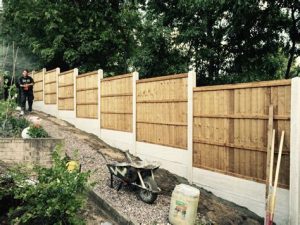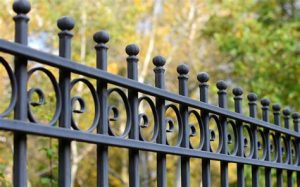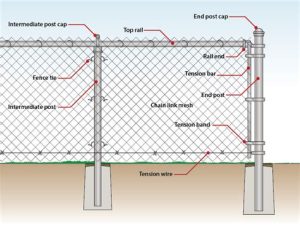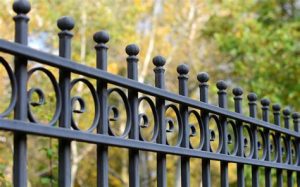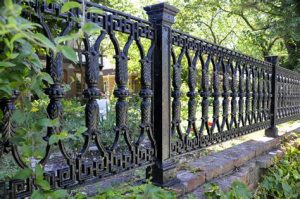Learn how to expertly select connectors, understand attachment points, and secure rod iron fences with essential preparation, measurement, and maintenance tips.When it comes to enhancing the beauty and security of your property, installing rod iron fences can be a striking choice. However, connecting these stylish fences to existing structures can seem daunting without the right guidance. This blog post will walk you through the essential steps to ensure a seamless integration of your rod iron fencing with your home or garden architecture. We’ll cover everything from selecting the right connectors to understanding attachment points, along with preparation and measurement tips for a sturdy setup. You’ll learn how to secure the fences properly and discover important finishing touches to maintain their durability and aesthetic appeal. With the right knowledge and a little effort, you can successfully enhance your space with elegant rod iron fencing that stands the test of time. Let’s dive into the process!
Selecting the Right Connectors
When it comes to installing rod iron fences, choosing the right connectors is crucial for ensuring stability and longevity. The type of connector you use can greatly influence both the aesthetics and the structural integrity of your fence. Below, we explore various connector types and their suitability for different fencing applications.
Connectors for rod iron fences come in various materials and designs.
- Welding: This provides a permanent and sturdy connection, ideal for heavy-duty installations.
- Bolts and Nuts: These offer flexibility if adjustments are needed later and are easy to install.
- Brackets: Perfect for attaching fences to walls or existing structures while allowing for some movement.
Additionally, consider the environmental conditions your fence will face. For instance, in humid areas, stainless steel or galvanized connectors might be ideal as they resist corrosion.
Understanding the Attachment Points
When it comes to installing rod iron fences, understanding the attachment points is crucial for a sturdy and long-lasting setup. These points are where your fence will connect to existing structures, ensuring stability and support.
Attachment points can vary based on the type of structure you are connecting to, such as walls, concrete posts, or wooden fences. It’s essential to assess these points carefully.
- Wall Brackets: Used to anchor the fence to a wall or another vertical surface.
- Post Anchors: Necessary for securing fence posts to the ground or concrete.
- Hinges and Latches: Used for gates within the fence line.
Before installation, always check that the attachment points are level, secure, and capable of bearing the weight of the rod iron fence. Properly understanding and preparing these critical areas will set the stage for a successful installation.
Remember to always consult local building codes and regulations regarding attachment points, as they can differ significantly by region. With the right preparation, you’ll ensure that your installation process is seamless and your fence is built to last!
Preparation and Measurement
Before embarking on the installation of rod iron fences, it is crucial to focus on the preparation and measurement aspects. Proper preparation ensures that your project runs smoothly and minimizes any potential issues during the installation process.
Start by analyzing the area where the rod iron fence will be installed. Clear the space of any debris, vegetation, or obstacles that might hinder your installation. A clean working environment allows for precise measurements and easier access to your tools. Once the area is prepared, use a measuring tape to outline the desired fence layout. This will help you determine the length of the fence panels required.
When measuring, it’s important to account for the attachment points on both the existing structure and the ground. Mark these points clearly using stakes or chalk, ensuring you maintain an even distance throughout. Additionally, take the time to check for level and plumb — these measurements are vital for achieving a professional-looking finish once your rod iron fence is connected to existing structures.
Securing the Rod Iron Fences
Securing rod iron fences to existing structures is a crucial step in ensuring stability and safety. It’s important to follow a systematic approach to guarantee that the installation is effective and meets both aesthetic and functional requirements. Here, we’ll discuss some essential tips to help you secure your rod iron fences properly.
First, you need to identify the attachment points on the existing structure. This may include walls, posts, or other sturdy surfaces. Use heavy-duty connectors that are appropriate for the materials involved. The choice of connectors will determine the strength of the connection, so ensure that they can withstand environmental stressors.
Next, consider the spacing of your rod iron fences. Proper space between the panels and the attachment points is vital. Typically, you should secure your fences at least every 5 to 6 feet, but this may vary based on the height and wind exposure of the area. Make sure to properly measure and level the sections before you begin the securing process.
| Connector Type | Material | Usage |
|---|---|---|
| Bolts | Stainless Steel | For attaching fences directly to wooden or metal structures |
| Brackets | Galvanized Steel | To secure panels to vertical posts |
| Welds | Iron | For permanent fixtures when attaching panels to metal posts |
Remember, once your rod iron fence is secured, it’s important to regularly check for any signs of wear or rust at the attachment points. Regular maintenance can prolong the life of your fence, ensuring that it remains a strong and visually appealing part of your property.
Finishing Touches and Maintenance
Once you have successfully installed your rod iron fences, it’s time to focus on the finishing touches and ongoing maintenance. These efforts are critical for ensuring the durability and aesthetic appeal of your fence. Here’s a guide on how to conclude your installation and keep your fences in top shape.
To begin with, consider applying a quality protective coating to your rod iron fences. This will not only enhance their appearance but also provide a barrier against rust and corrosion. You can choose from options like paint or powder coating. Ensuring that you select the right type of protective finish is essential for the longevity of the fences.
Another significant aspect of maintaining your rod iron fence is routine cleaning. Regularly removing dirt, debris, and any signs of rust can prevent long-term damage. A simple wash with soap and water, followed by a gentle scrub, will keep your fence looking new. Additionally, you should inspect for any loose elements or bolts and tighten them as needed to ensure structural integrity.
Lastly, check your fences for any signs of wear or damage at least twice a year. Addressing issues early on can save you from costly repairs in the future. Whether it’s repainting chipped areas or replacing any broken parts, early maintenance is key to extending the life of your rod iron fences.
Frequently Asked Questions
What materials do I need to connect wrought iron fences to existing structures?
You will need wrought iron fence panels, a drill with metal bits, anchors or brackets, a level, measuring tape, and safety gear.
Can I connect wrought iron fences to brick or concrete walls?
Yes, you can connect wrought iron fences to brick or concrete walls using appropriate anchors or brackets that are designed for these materials.
What tools are essential for installing wrought iron fences?
Essential tools include a drill, a level, a wrench, measuring tape, and potentially a saw if you need to cut the panels to size.
Is it necessary to get a permit before installing a wrought iron fence?
It often depends on your local regulations. It’s advisable to check with your local government or homeowner’s association to see if a permit is required.
How do I ensure the fence panels are level when connecting to an existing structure?
Use a level when positioning the fence panels and adjust the brackets as needed until everything is aligned correctly.
What type of brackets should I use to connect a wrought iron fence to a wall?
You should use heavy-duty wall brackets that are specifically designed to support the weight of wrought iron fencing.
Can I install a wrought iron fence myself, or should I hire a professional?
You can install a wrought iron fence yourself if you have the necessary tools and skills, but hiring a professional can ensure the job is done correctly and safely.
